MaryAnn Bernal's Blog, page 147
September 26, 2015
History Trivia - The Parthenon in Athens severely damaged by a gunpowder explosion
Sept 26
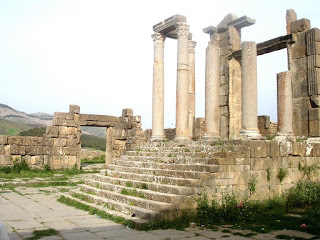
46 BC Julius Caesar dedicated a temple to his mythical ancestor Venus Genetrix in accordance with a vow he made at the battle of Pharsalus.
1181 St. Francis of Assisi, Italian Founder of the Franciscan Order, was born.
1687 The Parthenon in Athens, unscathed since 432 BC, was severely damaged by a gunpowder explosion, caused by the bombing from Venetian forces led by Morosini (Doge of Venice) who besieged the Ottoman Turks stationed in Athens.

46 BC Julius Caesar dedicated a temple to his mythical ancestor Venus Genetrix in accordance with a vow he made at the battle of Pharsalus.

1181 St. Francis of Assisi, Italian Founder of the Franciscan Order, was born.

1687 The Parthenon in Athens, unscathed since 432 BC, was severely damaged by a gunpowder explosion, caused by the bombing from Venetian forces led by Morosini (Doge of Venice) who besieged the Ottoman Turks stationed in Athens.
Published on September 26, 2015 00:00
September 25, 2015
History Trivia - Harold Godwinson victorious at Stamford Bridge
Sept 25
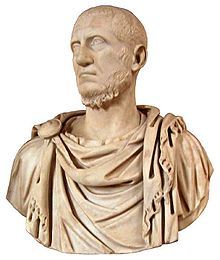
275 The Roman Senate proclaimed Marcus Claudius Tacitus Emperor after the assassination of Aurelian. During his short reign he campaigned against the Goths and the Heruli, for which he received the title Gothicus Maximus.

396 Ottoman Emperor Bayezid I defeated a Christian army at the Battle of Nicopolis, often referred to as the Crusade of Nicopolis and was the last large-scale crusade of the Middle Ages.
1066 Harold II (Harold Godwinson) of England defeated an invasion by Harald Hardrada of Norway, at Stamford Bridge near York, and marked the end of the Viking invasions of England. It also delayed Harold's arrival at Hastings, becoming a significant factor in the outcome of the Norman Conquest.

275 The Roman Senate proclaimed Marcus Claudius Tacitus Emperor after the assassination of Aurelian. During his short reign he campaigned against the Goths and the Heruli, for which he received the title Gothicus Maximus.

396 Ottoman Emperor Bayezid I defeated a Christian army at the Battle of Nicopolis, often referred to as the Crusade of Nicopolis and was the last large-scale crusade of the Middle Ages.

1066 Harold II (Harold Godwinson) of England defeated an invasion by Harald Hardrada of Norway, at Stamford Bridge near York, and marked the end of the Viking invasions of England. It also delayed Harold's arrival at Hastings, becoming a significant factor in the outcome of the Norman Conquest.
Published on September 25, 2015 00:00
September 24, 2015
Perfectly preserved tomb unearthed in Pompeii
Fox News
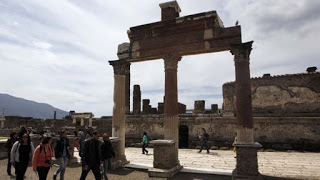 April 17, 2015: People visit the ruins at the ancient archaeological site of Pompeii. (REUTERS/Ciro de Luca)
April 17, 2015: People visit the ruins at the ancient archaeological site of Pompeii. (REUTERS/Ciro de Luca)
French archaeologists unexpectedly discovered an untouched pre-Roman tomb in Pompeii that dates to 4th century B.C., a time long before the city was famously destroyed after Mount Vesuvius erupted in A.D. 79, Sky News reports.
The tomb’s intact condition suggests the Romans who lived in Pompeii prior to Vesuvius’ eruption knew of its existence and did not build on top of it. The tomb also survived World War II, despite the area where it was found coming under heavy Allied bombing during the conflict.
The remains of an adult woman were found inside, along with clay jars called amphoras, the Local reports. The contents of those jars are perfectly preserved and will be determined in the coming weeks, History.com adds. They are expected to hold things like food, wine and cosmetics.
The tomb is particularly significant because it comes from a time period archaeologists know relatively little about. According to Massimo Osanna, archaeological superintendent at Pompeii, identifying the materials the woman was buried with could offer insight into the funerary practices of the time and reveal “much about the role of women in Samnite society,” Osanna told History.com. Archaeologists are now planning to explore the area surrounding the tomb, as such tombs are rarely found in isolation.
“These excavations prove that the city of Pompeii is still alive and that we must preserve it as it continues to provide us with material for research,” Osanna adds.
The ruins of Pompeii, a now-popular tourist attraction, were first discovered at the end of the 16th century. Full-scale excavations began during the mid-18th century. Early excavations of Pompeii are credited with launching h the modern science of archaeology,
 April 17, 2015: People visit the ruins at the ancient archaeological site of Pompeii. (REUTERS/Ciro de Luca)
April 17, 2015: People visit the ruins at the ancient archaeological site of Pompeii. (REUTERS/Ciro de Luca)French archaeologists unexpectedly discovered an untouched pre-Roman tomb in Pompeii that dates to 4th century B.C., a time long before the city was famously destroyed after Mount Vesuvius erupted in A.D. 79, Sky News reports.
The tomb’s intact condition suggests the Romans who lived in Pompeii prior to Vesuvius’ eruption knew of its existence and did not build on top of it. The tomb also survived World War II, despite the area where it was found coming under heavy Allied bombing during the conflict.
The remains of an adult woman were found inside, along with clay jars called amphoras, the Local reports. The contents of those jars are perfectly preserved and will be determined in the coming weeks, History.com adds. They are expected to hold things like food, wine and cosmetics.
The tomb is particularly significant because it comes from a time period archaeologists know relatively little about. According to Massimo Osanna, archaeological superintendent at Pompeii, identifying the materials the woman was buried with could offer insight into the funerary practices of the time and reveal “much about the role of women in Samnite society,” Osanna told History.com. Archaeologists are now planning to explore the area surrounding the tomb, as such tombs are rarely found in isolation.
“These excavations prove that the city of Pompeii is still alive and that we must preserve it as it continues to provide us with material for research,” Osanna adds.
The ruins of Pompeii, a now-popular tourist attraction, were first discovered at the end of the 16th century. Full-scale excavations began during the mid-18th century. Early excavations of Pompeii are credited with launching h the modern science of archaeology,
Published on September 24, 2015 09:20
History Trivia - Battle of Rowton Heath, Parliamentarian victory over Royalist army
Sept 24
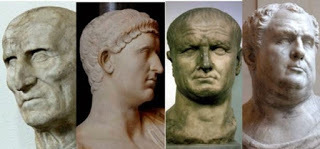
15 Aulus Vitellius was born. Vitellius was acclaimed emperor following the quick succession of the previous emperors Galba and Otho, in a year of civil war known as the Year of the Four Emperors. Vitellius was the first to add the honorific cognomen Germanicus to his name instead of Caesar upon his accession; the latter name had fallen into disrepute in many quarters because of the actions of Nero.
768 Pepin the Short, King of the Franks and father of Charlemagne, died at age 54.
1645 Battle of Rowton Heath, Parliamentarian victory over a Royalist army commanded by King Charles I; casualties estimated at 600 dead and 900 injured.

15 Aulus Vitellius was born. Vitellius was acclaimed emperor following the quick succession of the previous emperors Galba and Otho, in a year of civil war known as the Year of the Four Emperors. Vitellius was the first to add the honorific cognomen Germanicus to his name instead of Caesar upon his accession; the latter name had fallen into disrepute in many quarters because of the actions of Nero.

768 Pepin the Short, King of the Franks and father of Charlemagne, died at age 54.

1645 Battle of Rowton Heath, Parliamentarian victory over a Royalist army commanded by King Charles I; casualties estimated at 600 dead and 900 injured.
Published on September 24, 2015 00:30
September 23, 2015
The Search Continues: Scientists to Use Radar in Hunt for the Tomb of Nefertiti
Ancient Origins
 Egyptologists have been given the green light to use non-invasive radar to see if the chamber hidden behind a wall in King Tutankhamun’s tomb in the Valley of the Kings really does belong to Nefertiti. The go ahead has been given following the recent release of highly-debated reports from Dr. Nicholas Reeves.
Egyptologists have been given the green light to use non-invasive radar to see if the chamber hidden behind a wall in King Tutankhamun’s tomb in the Valley of the Kings really does belong to Nefertiti. The go ahead has been given following the recent release of highly-debated reports from Dr. Nicholas Reeves.
In his report (which has yet to be peer-reviewed), Reeves asserts that there are entrances to another chamber visible beneath the painted and plastered walls of Tutankhamen’s tomb. He believes that these entrances may lead to the answer of where Nefertiti was entered. The style and size of the tomb in which King Tut was found also seems to be more appropriate for a queen than a king, according to Reeves.
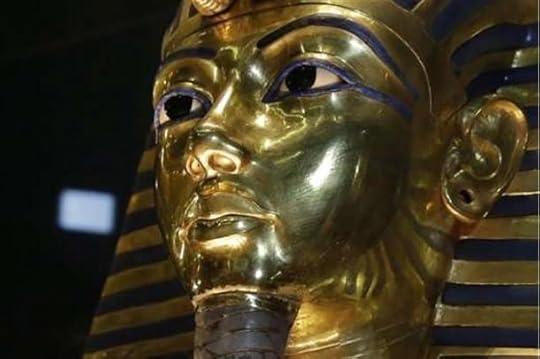 The golden mask of King Tut. Tutankhamen’s tomb is the gateway to the lost tomb of Nefertiti according to a recent report. (
Phys.org
)Reeves is undoubtedly accompanied by others in the impatience to discover if what the digital scans by Factum Arte, really are indications of a great find. A press release says that Reeves will be arriving in Luxor on September 28 to meet with Antiquities Minister Mamduh al-Damati and “the best Egyptologists in the ministry to examine the interior of the tomb.”
The golden mask of King Tut. Tutankhamen’s tomb is the gateway to the lost tomb of Nefertiti according to a recent report. (
Phys.org
)Reeves is undoubtedly accompanied by others in the impatience to discover if what the digital scans by Factum Arte, really are indications of a great find. A press release says that Reeves will be arriving in Luxor on September 28 to meet with Antiquities Minister Mamduh al-Damati and “the best Egyptologists in the ministry to examine the interior of the tomb.”
Mouchira Moussa, media consultant to Antiquities Minister Mamdouh al-Damati, has said that they are hoping to have a security clearance to use the radar within a month and that the radar is “…not going to cause any damage to the monument.”
Reeves believes that the sudden death of King Tutankhamen in 1332 BC led to his being placed in a part of Nefertiti’s tomb. The two “ghost” doors that he identified in the scans are said to be to a storage room and the tomb of Nefertiti.
 Image showing the location of the two chambers from Dr. Reeves report. The upcoming radar scan will search for their existence. (
Daily Mail
)"We're very excited... It may not be a tomb belonging to Nefertiti, but it could be a tomb belonging to one of the nobles," said Moussa about the upcoming work at the tomb. "If it is Nefertiti's, this would be very massive."
Image showing the location of the two chambers from Dr. Reeves report. The upcoming radar scan will search for their existence. (
Daily Mail
)"We're very excited... It may not be a tomb belonging to Nefertiti, but it could be a tomb belonging to one of the nobles," said Moussa about the upcoming work at the tomb. "If it is Nefertiti's, this would be very massive."
The Elusive Tomb of Queen Nefertiti may lie behind the walls of Tutankhamun's Burial ChamberThe Mysterious Disappearance of Nefertiti, Ruler of the NilePharaoh AkhenatenAhram Online says that they have contacted Reeves for more information regarding the upcoming procedure; however he will not be releasing a statement until after the analysis is completed. The only other known information available is that the radar will be coming from Japan and operated by an expert accompanying the machine from Japan.
The news statement from the Antiquities Minister says we will not have to wait too long to find out more information on the next step: there will be a news conference on October 1st in Cairo to present the preliminary findings and the plan they will use to “verify with certainty” if hidden rooms exist and “still conceal secrets or not.”
Neferneferuaten Nefertiti was born in 1370 BC and died in 1340 BC. She was married to the Pharaoh Akhenaten and renowned for her beauty. Her fame as an Egyptian queen is only second to that of Cleopatra. The mystery of the location of Nefertiti’s tomb has been one of the biggest mysteries in Egyptology.
Featured Image: Bust of Nefertiti, the Egyptian Queen for whom a tomb has yet to be found. ( Ahram Online )
By Alicia McDermott
 Egyptologists have been given the green light to use non-invasive radar to see if the chamber hidden behind a wall in King Tutankhamun’s tomb in the Valley of the Kings really does belong to Nefertiti. The go ahead has been given following the recent release of highly-debated reports from Dr. Nicholas Reeves.
Egyptologists have been given the green light to use non-invasive radar to see if the chamber hidden behind a wall in King Tutankhamun’s tomb in the Valley of the Kings really does belong to Nefertiti. The go ahead has been given following the recent release of highly-debated reports from Dr. Nicholas Reeves.In his report (which has yet to be peer-reviewed), Reeves asserts that there are entrances to another chamber visible beneath the painted and plastered walls of Tutankhamen’s tomb. He believes that these entrances may lead to the answer of where Nefertiti was entered. The style and size of the tomb in which King Tut was found also seems to be more appropriate for a queen than a king, according to Reeves.
 The golden mask of King Tut. Tutankhamen’s tomb is the gateway to the lost tomb of Nefertiti according to a recent report. (
Phys.org
)Reeves is undoubtedly accompanied by others in the impatience to discover if what the digital scans by Factum Arte, really are indications of a great find. A press release says that Reeves will be arriving in Luxor on September 28 to meet with Antiquities Minister Mamduh al-Damati and “the best Egyptologists in the ministry to examine the interior of the tomb.”
The golden mask of King Tut. Tutankhamen’s tomb is the gateway to the lost tomb of Nefertiti according to a recent report. (
Phys.org
)Reeves is undoubtedly accompanied by others in the impatience to discover if what the digital scans by Factum Arte, really are indications of a great find. A press release says that Reeves will be arriving in Luxor on September 28 to meet with Antiquities Minister Mamduh al-Damati and “the best Egyptologists in the ministry to examine the interior of the tomb.”Mouchira Moussa, media consultant to Antiquities Minister Mamdouh al-Damati, has said that they are hoping to have a security clearance to use the radar within a month and that the radar is “…not going to cause any damage to the monument.”
Reeves believes that the sudden death of King Tutankhamen in 1332 BC led to his being placed in a part of Nefertiti’s tomb. The two “ghost” doors that he identified in the scans are said to be to a storage room and the tomb of Nefertiti.
 Image showing the location of the two chambers from Dr. Reeves report. The upcoming radar scan will search for their existence. (
Daily Mail
)"We're very excited... It may not be a tomb belonging to Nefertiti, but it could be a tomb belonging to one of the nobles," said Moussa about the upcoming work at the tomb. "If it is Nefertiti's, this would be very massive."
Image showing the location of the two chambers from Dr. Reeves report. The upcoming radar scan will search for their existence. (
Daily Mail
)"We're very excited... It may not be a tomb belonging to Nefertiti, but it could be a tomb belonging to one of the nobles," said Moussa about the upcoming work at the tomb. "If it is Nefertiti's, this would be very massive."The Elusive Tomb of Queen Nefertiti may lie behind the walls of Tutankhamun's Burial ChamberThe Mysterious Disappearance of Nefertiti, Ruler of the NilePharaoh AkhenatenAhram Online says that they have contacted Reeves for more information regarding the upcoming procedure; however he will not be releasing a statement until after the analysis is completed. The only other known information available is that the radar will be coming from Japan and operated by an expert accompanying the machine from Japan.
The news statement from the Antiquities Minister says we will not have to wait too long to find out more information on the next step: there will be a news conference on October 1st in Cairo to present the preliminary findings and the plan they will use to “verify with certainty” if hidden rooms exist and “still conceal secrets or not.”
Neferneferuaten Nefertiti was born in 1370 BC and died in 1340 BC. She was married to the Pharaoh Akhenaten and renowned for her beauty. Her fame as an Egyptian queen is only second to that of Cleopatra. The mystery of the location of Nefertiti’s tomb has been one of the biggest mysteries in Egyptology.
Featured Image: Bust of Nefertiti, the Egyptian Queen for whom a tomb has yet to be found. ( Ahram Online )
By Alicia McDermott
Published on September 23, 2015 08:01
History Trivia - Greek Victory at Salamis
Sept 23
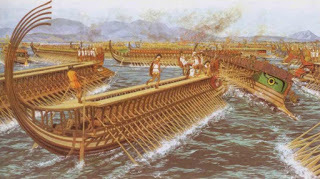
480 BC The Greeks defeated the Persians in the greatest of ancient naval battles, at Salamis, avenging the destruction of Athens. Over 1,000 Persian ships were sunk by fewer than 400 Greek vessels.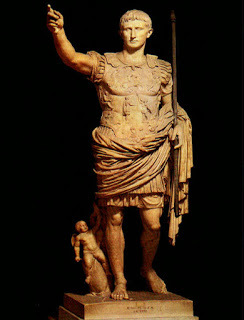
63 BC Augustus (Octavian) was born. He was the Roman emperor at the time of Christ, and the founder in 27 BC of the Roman Empire as it was known after the end of the Roman Republic of Julius Caesar's time.
1459 Battle of Blore Heath, the first major battle of the English Wars of the Roses, was fought at Blore Heath in Staffordshire. The Yorkists, though inferior in numbers, were completely victorious.

480 BC The Greeks defeated the Persians in the greatest of ancient naval battles, at Salamis, avenging the destruction of Athens. Over 1,000 Persian ships were sunk by fewer than 400 Greek vessels.

63 BC Augustus (Octavian) was born. He was the Roman emperor at the time of Christ, and the founder in 27 BC of the Roman Empire as it was known after the end of the Roman Republic of Julius Caesar's time.

1459 Battle of Blore Heath, the first major battle of the English Wars of the Roses, was fought at Blore Heath in Staffordshire. The Yorkists, though inferior in numbers, were completely victorious.
Published on September 23, 2015 00:00
September 22, 2015
Extremely rare discovery of Pre-Roman tomb in Pompeii will shed light on its early history
Ancient Origins
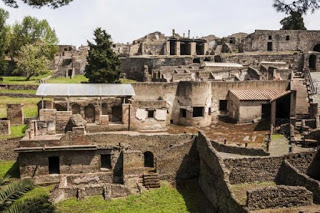

Archaeologists have unearthed an extremely rare 4th century BC tomb of a woman dating to before the Roman presence in Pompeii, when the Samnites occupied the area. Evidence suggests the Romans knew of the burial site and chose not to build on it, allowing the site to survive undisturbed for more than two millennia. Scholars hope the find will give important insight into the Samnite people, an Italic people who once fought against the Romans.
Inside the tomb, archaeologists found amphorae or earthenware jugs, still with substances in them. The clay jars were found to come from various parts of Italy, showing that the Samnite people had contact outside their own area on the western coast of Italy. Researchers will examine the contents of the jars, but an initial examinations revealed food, wine and cosmetics, providing a fascinating insight into Samnite diet and culture.
A French archaeological team based in Naples discovered the tomb by surprise.
“The burial objects will show us much about the role of women in Samnite society and can provide us with a useful social insight,” Massimo Osanna, the archaeological superintendent of Pompeii said, according to theLocal.it.
After the Samnite Wars in the 4th century BC, the town became subject to Rome while still retaining administrative and linguistic autonomy. Osanna said little is known about Pompeii before Rome annexed it.
The Samnite inhabitants of early Pompeii took part in the wars against Rome along with other towns of the Campania region in 89 BC. Rome laid siege to the town but did not subdue it until 80 BC.
Only a century later, in 79 AD, Mount Vesuvius erupted and the town and many of its residents were overcome by a cloud of super-hot gas and buried in ash that froze them in time. The preserved city is now a major tourist attraction and has been undergoing renovations and restoration in the face of degradation from thieves, time and the elements.
 The well-preserved city of Pompeii as it is today. (BigStockPhotos)Before the Samnites took over the town, it was built by the Oscan people in the 6th or 7th century BC. Before that, scholars think, Greeks and Etruscans had used it as a safe harbor. The city was much sought after as Pompeii was at an important crossroads. The Samnites conquered the Osci in the 5th century BC.
The well-preserved city of Pompeii as it is today. (BigStockPhotos)Before the Samnites took over the town, it was built by the Oscan people in the 6th or 7th century BC. Before that, scholars think, Greeks and Etruscans had used it as a safe harbor. The city was much sought after as Pompeii was at an important crossroads. The Samnites conquered the Osci in the 5th century BC.Archaeologists will excavate the area around the tomb to see if there are other tombs nearby. Where there is one tomb, there usually are more. That said, the area where the tomb was found was shelled in World War II, so it is questionable whether other tombs have survived.
Although Pompeii was initially rediscovered at the end of the 16th century, it was only properly excavated in the 18th century. Excavators were startled by the sexually explicit frescoes they were unearthing, quite shocking to the sensibilities of the people of the time, so they quickly covered them over. They remained buried for another two centuries before society was ready to face the raunchy paintings of Pompeii.
 The raunchy frescoes of Pompeii are the reason the city lay buried for two centuries after its initial discovery. (BigStockPhoto)When excavations resumed in the 18th century, archaeologists found the city almost entirely intact – loaves of bread still sat in the oven, bodies of men, women, children and pets were found frozen in their last moments, the expressions of fear still etched on their faces, and the remains of meals discarded on the pavement. The discovery meant that researchers could piece together exactly what life was like for the ancient Romans of Pompeii – the food they ate, the jobs they performed and the houses they lived in.
The raunchy frescoes of Pompeii are the reason the city lay buried for two centuries after its initial discovery. (BigStockPhoto)When excavations resumed in the 18th century, archaeologists found the city almost entirely intact – loaves of bread still sat in the oven, bodies of men, women, children and pets were found frozen in their last moments, the expressions of fear still etched on their faces, and the remains of meals discarded on the pavement. The discovery meant that researchers could piece together exactly what life was like for the ancient Romans of Pompeii – the food they ate, the jobs they performed and the houses they lived in. Fresco in a Roman villa from Pompeii (Photo by Canadacow/
Wikimedia Commons
)A team of scientists, including archaeologists, engineers, an anthropologist, restoration experts and radiologists, have been undertaking the Great Pompeii Project to do anthropological and genetic profiling of the unfortunate victims of the eruption. The scientists hope to get a better understanding of their way of life and identify them more fully. They will publish their findings and be featured in a documentary by a restoration company from Salerno.
Fresco in a Roman villa from Pompeii (Photo by Canadacow/
Wikimedia Commons
)A team of scientists, including archaeologists, engineers, an anthropologist, restoration experts and radiologists, have been undertaking the Great Pompeii Project to do anthropological and genetic profiling of the unfortunate victims of the eruption. The scientists hope to get a better understanding of their way of life and identify them more fully. They will publish their findings and be featured in a documentary by a restoration company from Salerno.Scholars think Pompeii, which was a Roman resort town, had a population of about 20,000 before the eruption. Most fled, apparently when Vesuvius began to rumble, but about 2,000 people stayed and were killed.
Featured image: The grave of a Samnite woman has been unearthed in Pompeii; the Samnites lived in Pompeii before it became subject to Rome. The Samnites took Pompeii over from the Osci. (Pompeii archaeological superintendent’s office photo)
By Mark Miller
Published on September 22, 2015 08:18
In a nutshell: the Borgias
History Extra

Lucrezia Borgia with her father Pope Alexander VI, painting by Giuseppe Boschetto. (Photo by DeAgostini/Getty Images)
Who were they?
The Borgias were a powerful family in Renaissance Italy. Despite the fact that they produced two Popes, their name has become associated with all kinds of dark deeds.
How did the Borgias first come to prominence?
They were originally a noble Spanish dynasty, who switched to Italy when Alfonso di Borgia (1378-1458) was made a Cardinal in 1444. Eleven years later, he was appointed as Pope – taking the name Callixtus III – and gave a leg-up to his nephew Rodrigo Borgia. In 1492, Rodrigo kept the family tradition going and also succeeded to the papacy. As the hugely controversial Pope Alexander VI, he began to accumulate a vast amount of land and power for himself and his illegitimate children.
Could a Pope have children?
As a priest, Rodrigo was supposed to live in celibacy, but this did not prevent him having a number of mistresses and fathering several children – even while Pope. He was not the only priest to have had children, but the way he openly acknowledged many of them and sought to advance their careers was unusual.
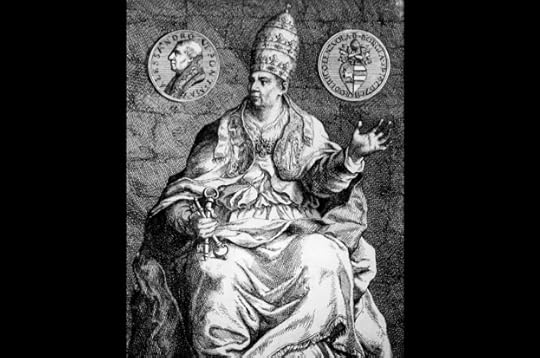 Pope Alexander VI used his position to build fortune and power (Photo by Hulton Archive/Getty Images)
Pope Alexander VI used his position to build fortune and power (Photo by Hulton Archive/Getty Images)
Which of his children were the most noteworthy?
Soon after becoming Pope, Rodrigo had his son Cesare made a Cardinal. Cesare, however, was not suited to the religious life and instead became a military commander, where he conducted a number of campaigns in the sole hope of creating a Borgia principality in Italy that would survive the death of his father. He was forced to abandon this dream when his father died in 1503 and was replaced as Pope by Julius II, who was instantly hostile to the Borgia family. Cesare ended up leaving Italy and dying in Spain during a skirmish.
Another notable child of Rodrigo’s was Lucrezia, used by her father as a diplomatic pawn. Three marriages, which were politically advantageous for the Borgias, were arranged for her. Her first was annulled due to supposed non-consummation, while her second husband was murdered by Cesare’s servants. In the end, Lucrezia’s third and final marriage, to the Duke of Ferrara, was much happier and she managed to achieve a comfortable life at court, where she became a patron of the arts.
 Lucrezia Borgia was married three times as the Borgias expanded their power (Photo by ullstein bild/ullstein bild via Getty Images)
Lucrezia Borgia was married three times as the Borgias expanded their power (Photo by ullstein bild/ullstein bild via Getty Images)
Why do the Borgias have such a bad reputation?
The Borgias were accused of a catalogue of sins, among them murder, incest, poisoning and bewitching. They are also infamously associated with all manner of sexual depravity. The most notorious and sordid tale was the ‘Banquet of Chestnuts’ in 1501 – a mass orgy supposedly held by Cesare in Rome, and featuring 50 naked prostitutes who spent the evening entertaining the dignitaries, as well as the holy family.
Part of the reason for this black reputation is that Rodrigo and Cesare were ruthless and highly ambitious men, prepared to use violence and trickery to increase their power. It is not for nothing that Cesare was a great inspiration to the writer Niccolo Machiavelli. Yet, many of the extreme allegations made against the Borgias don’t stand up to scrutiny and seem likely to have been fabricated by their enemies, of whom there were many.
Coming from Spain, the Borgias were always viewed as outsiders in Italy. What popularity they acquired, moreover, was diminished by their constant efforts to gain land and power at the expense of others. Their dynasty was brief – after Rodrigo died, they faded as quickly as they had risen, leaving few friends remaining who would defend their memory from the rumours that immediately began swirling around them.
So has history been unfair to the Borgias?
It almost certainly has. The Borgias are remembered as sexual deviants and murderers, but when the more unlikely accusations are removed, their behaviour was not necessarily worse than that of many other powerful Italian families in the Renaissance era. They were far from saints, but don’t deserve to be remembered as the epitome of villainy.
Submitted by: Jonny Wilkes
This article was first published in the October 2015 issue of History Revealed

Lucrezia Borgia with her father Pope Alexander VI, painting by Giuseppe Boschetto. (Photo by DeAgostini/Getty Images)
Who were they?
The Borgias were a powerful family in Renaissance Italy. Despite the fact that they produced two Popes, their name has become associated with all kinds of dark deeds.
How did the Borgias first come to prominence?
They were originally a noble Spanish dynasty, who switched to Italy when Alfonso di Borgia (1378-1458) was made a Cardinal in 1444. Eleven years later, he was appointed as Pope – taking the name Callixtus III – and gave a leg-up to his nephew Rodrigo Borgia. In 1492, Rodrigo kept the family tradition going and also succeeded to the papacy. As the hugely controversial Pope Alexander VI, he began to accumulate a vast amount of land and power for himself and his illegitimate children.
Could a Pope have children?
As a priest, Rodrigo was supposed to live in celibacy, but this did not prevent him having a number of mistresses and fathering several children – even while Pope. He was not the only priest to have had children, but the way he openly acknowledged many of them and sought to advance their careers was unusual.
 Pope Alexander VI used his position to build fortune and power (Photo by Hulton Archive/Getty Images)
Pope Alexander VI used his position to build fortune and power (Photo by Hulton Archive/Getty Images)Which of his children were the most noteworthy?
Soon after becoming Pope, Rodrigo had his son Cesare made a Cardinal. Cesare, however, was not suited to the religious life and instead became a military commander, where he conducted a number of campaigns in the sole hope of creating a Borgia principality in Italy that would survive the death of his father. He was forced to abandon this dream when his father died in 1503 and was replaced as Pope by Julius II, who was instantly hostile to the Borgia family. Cesare ended up leaving Italy and dying in Spain during a skirmish.
Another notable child of Rodrigo’s was Lucrezia, used by her father as a diplomatic pawn. Three marriages, which were politically advantageous for the Borgias, were arranged for her. Her first was annulled due to supposed non-consummation, while her second husband was murdered by Cesare’s servants. In the end, Lucrezia’s third and final marriage, to the Duke of Ferrara, was much happier and she managed to achieve a comfortable life at court, where she became a patron of the arts.
 Lucrezia Borgia was married three times as the Borgias expanded their power (Photo by ullstein bild/ullstein bild via Getty Images)
Lucrezia Borgia was married three times as the Borgias expanded their power (Photo by ullstein bild/ullstein bild via Getty Images)Why do the Borgias have such a bad reputation?
The Borgias were accused of a catalogue of sins, among them murder, incest, poisoning and bewitching. They are also infamously associated with all manner of sexual depravity. The most notorious and sordid tale was the ‘Banquet of Chestnuts’ in 1501 – a mass orgy supposedly held by Cesare in Rome, and featuring 50 naked prostitutes who spent the evening entertaining the dignitaries, as well as the holy family.
Part of the reason for this black reputation is that Rodrigo and Cesare were ruthless and highly ambitious men, prepared to use violence and trickery to increase their power. It is not for nothing that Cesare was a great inspiration to the writer Niccolo Machiavelli. Yet, many of the extreme allegations made against the Borgias don’t stand up to scrutiny and seem likely to have been fabricated by their enemies, of whom there were many.
Coming from Spain, the Borgias were always viewed as outsiders in Italy. What popularity they acquired, moreover, was diminished by their constant efforts to gain land and power at the expense of others. Their dynasty was brief – after Rodrigo died, they faded as quickly as they had risen, leaving few friends remaining who would defend their memory from the rumours that immediately began swirling around them.
So has history been unfair to the Borgias?
It almost certainly has. The Borgias are remembered as sexual deviants and murderers, but when the more unlikely accusations are removed, their behaviour was not necessarily worse than that of many other powerful Italian families in the Renaissance era. They were far from saints, but don’t deserve to be remembered as the epitome of villainy.
Submitted by: Jonny Wilkes
This article was first published in the October 2015 issue of History Revealed
Published on September 22, 2015 08:12
History Trivia - Emperor Nero creates the Legion I Italica.
Sept 22,
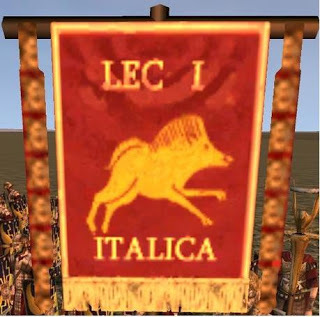
66 Emperor Nero created the Legion I Italica.
1499 Switzerland became an independent state.
1515 Anne of Cleves was born. The fourth wife of Henry VIII, Anne was able to obtain a divorce and maintained a friendly relationship with the Tudor family.

66 Emperor Nero created the Legion I Italica.

1499 Switzerland became an independent state.

1515 Anne of Cleves was born. The fourth wife of Henry VIII, Anne was able to obtain a divorce and maintained a friendly relationship with the Tudor family.
Published on September 22, 2015 00:30
September 21, 2015
The Diane Turner Show 20-9-15 on More Music Radio
Published on September 21, 2015 07:49




